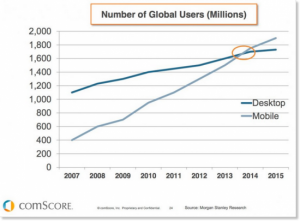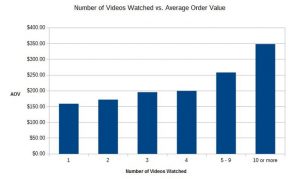Website Performance & Poor Conversion Rate

Your website has been designed, everything seems to be spick & span. You have gone through all the prerequisites which are needed for a modern crisp website. Furthermore, your analytics are also showing healthy website traffic which is better than ever before. But still, conversion rates are low and bounce rates are high. Such a situation is very alarming for any website manager. There is a compendium of reason associated with poor performance of a website but I will be shedding light on a few of the following.
Poor Design:
 A design is something which directly impacts the UX & UI of a visitor of a website. While creating a website it must be clear what is the purpose or need to be served through a particular page of a website? Is it supposed to be wordy or should it be an application style website? no one can give a definitive answer in this case but we can surely determine through various studies of customer behaviour and the past experiences. Over the years we have definitely observed that people don’t really have time in the current age and hence they skim through the content over websites. As per Dream Grow we must Keep your content short & simple. Reading long paragraphs needs concentration, which is something that mobile users don’t have.
A design is something which directly impacts the UX & UI of a visitor of a website. While creating a website it must be clear what is the purpose or need to be served through a particular page of a website? Is it supposed to be wordy or should it be an application style website? no one can give a definitive answer in this case but we can surely determine through various studies of customer behaviour and the past experiences. Over the years we have definitely observed that people don’t really have time in the current age and hence they skim through the content over websites. As per Dream Grow we must Keep your content short & simple. Reading long paragraphs needs concentration, which is something that mobile users don’t have.
Page Load Time:
 Load time in particular impacts the decision of an individual regarding leaving or staying on a website and as per HubSpot considers the ideal page load speed for your website’s HTML to be less than 1.5 seconds. We all know that majority of internet users have shifted to mobile devices due to which people are on the go and if page load time isn’t managed properly then it will result in lower traffic to a website.
Load time in particular impacts the decision of an individual regarding leaving or staying on a website and as per HubSpot considers the ideal page load speed for your website’s HTML to be less than 1.5 seconds. We all know that majority of internet users have shifted to mobile devices due to which people are on the go and if page load time isn’t managed properly then it will result in lower traffic to a website.
Page load time can be controlled by various options like uploading less heavy content over a website which doesn’t take much time to load. Apart from this with the help of technology like AMP & PWA, we can now enhance our speed and create a better user experience for our target audience.
Call to Action:
Call to action clearly acts like an icing on a cake. There shouldn’t be too many CTA’s that a visitor gets annoyed or there shouldn’t be too less that we loose our visitor on the website. We need to have a perfect mix of CTA’s which guides or redirects the website visitor where he/she wants to go. On the other hand, these call to actions will close the leads for website manager and hence will result in optimal performance.
Autoplay Videos:
 Videos are something which can do wonders to a website. It brings in motion and movement into the static world of a website. But we need to reconsider the size of videos which shall be uploaded on the website and compromises the load time of a website. Videos convert better than text, images, and other types of content. You cannot ignore videos especially if the conversion rate is dropping. You must use videos on product pages as it increases conversion rate by 9% and video views are positively associated with average order value. You just have to get rid of the autoplay.
Videos are something which can do wonders to a website. It brings in motion and movement into the static world of a website. But we need to reconsider the size of videos which shall be uploaded on the website and compromises the load time of a website. Videos convert better than text, images, and other types of content. You cannot ignore videos especially if the conversion rate is dropping. You must use videos on product pages as it increases conversion rate by 9% and video views are positively associated with average order value. You just have to get rid of the autoplay.
Imagine you have clicked on multiple links and there are more than 10 tabs in your browser. You start hearing a horrible ad. It is that autoplay video on one of those tabs you just opened. You click on every tab to get rid of the annoying video ad. I have personally experienced this a lot of time and I am sure you would have also experienced it in various situations. According to W3C auto-playing a video or an audio interrupt the user and is a hurdle in the navigation process.
Since autoplay videos are negatively associated with user experience and navigation process, therefore, visitors will eventually turn away.
CONCLUSION
Conversion rate optimisation isn’t simple because there is no exact rule of a book which is to be followed while creating a website. There are various best practices and we need to test and tweak our intuitions to get the maximum out of our websites through trial and error. At times, it is just about adding or removing a single word from the CTA.
We shall start from minor changes and see the impact on the performance of a website. Eventually, we will end up on generating better traffic, with better user experience and better conversion rate.
-
AUTHOR

Hassan Javed
Assistant Marketing Manager





 Posted On December 30 2025
Posted On December 30 2025